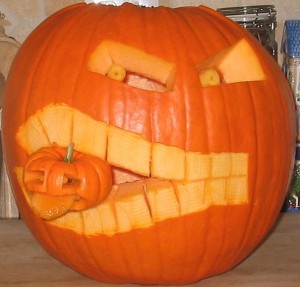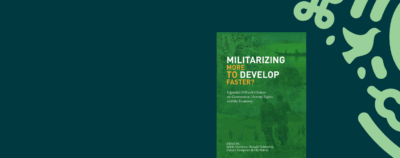 Halloween, a holiday of pagan and Christian roots, is now the second most popular holiday in the United States (just behind the August to December Christmas season). American consumers are projected to spend $5.77 billion this year alone. In honor of this day, we have put together a round up of all things spookily secular and eerily religious below:
Halloween, a holiday of pagan and Christian roots, is now the second most popular holiday in the United States (just behind the August to December Christmas season). American consumers are projected to spend $5.77 billion this year alone. In honor of this day, we have put together a round up of all things spookily secular and eerily religious below:
At Ethics Daily, Jim Evans reflects on the secularization and commercialization of Halloween, and how the religious message of All Saints Day has been lost. He worries that Christmas will be next on the chopping block to lose its religious roots.
Bill Berkowitz at Religion Dispatches writes about Halloween Hell Houses, also known as “Judgment Houses,” which are haunted, not by ghosts, but by the spirit of poor decisions past. He also links to a website that can show you how to build your own Hell House, and frighten your neighbors into atoning for sin.
Lee Ann Kinkade discusses in Slate the difficulty many witches have around Samhain celebrations, including coven (dis)organization, ritual planning, and religious tourists, while Starhawk writes about Halloween rites and roots for Wiccans on the blog On Faith.
The United Methodist Church and the Unitarian Universalist Service Committee are celebrating Halloween by encouraging the faithful to hand out Fair Trade chocolate, as a way to combat child labor and unfair business practices. Some will even be reverse trick-or-treating, giving Fair Trade chocolate to neighbors and friends.
JTA brings us the essential Jewish quandary for this year: for those who celebrate (which is not all Jews, no matter how many Sarah Palin wigs Orthodox women buy), how do you celebrate Halloween and Shabbat? And is Halloween a violation of Jewish law or a celebration of tzedakah?
If you do choose to celebrate, Beliefnet.com has the top 10 religious Halloween candies, with Christian, Jewish, Buddhist, and Muslim options—some are kosher, some are halal, all are delicious.
If you’re still wondering if you should turn off the lights and ignore the ringing doorbell, the Dallas Morning News Religion blog points us to Halloween videos on GodTube, both for and against Halloween, while College Humor.com spoofs on trick-or-treating at your more religious, less candy oriented, neighbor’s house.
If you’re for Halloween:
If you’re against:
And if you just love to trick-or-treat:














This blog post strikes a deep cord and takes me back to my childhood in Tulsa, Oklahoma. One of my first formative interactions with Halloween was religious. As far back as I can remember, the single most advertised event in Tulsa during the spooking season was the Nightmare. The Nightmare, billed as an ‘extreme haunted house experience,’ of course, had me, its target audience, in the palm of its ghoulish hand.
As a member of Tulsa’s small Jewish community , I did not quite understand how “target audience” I actually was. Unbeknownst to me and the slew of other Jews (and liberals) who found themselves at the Nightmare (either at their own behest or tagging-along with a friends’ family), the Nightmare was an instrument of a right-wing Christian organization/congregation. Rather than Devils and Monsters popping out to frighten the crowd of children, there were pictures of aborted fetuses, and a real-life portrayals of the crucifixion of Christ.
Even as a child, although I was not expecting the Christian conservative messages, I was not shocked or dumbfounded by my experience at the Nightmare. On the contrary, it was quite in keeping with the omnipresence of Christian fundamentalism in the public sphere. It strikes me that this is not an unheard of or unique experience for religious/political minorities across the United States. Rather, Christianity, the religion of Tulsa and America, bled seamlessly into my secular world while it continually challenged my religious and political world.
For this reason, I was tickled when I read Ethics Daily’s Jim Evans lament of the loss of All Saints Day and his fear for the secularization of Christmas. I think there is very little to fear.